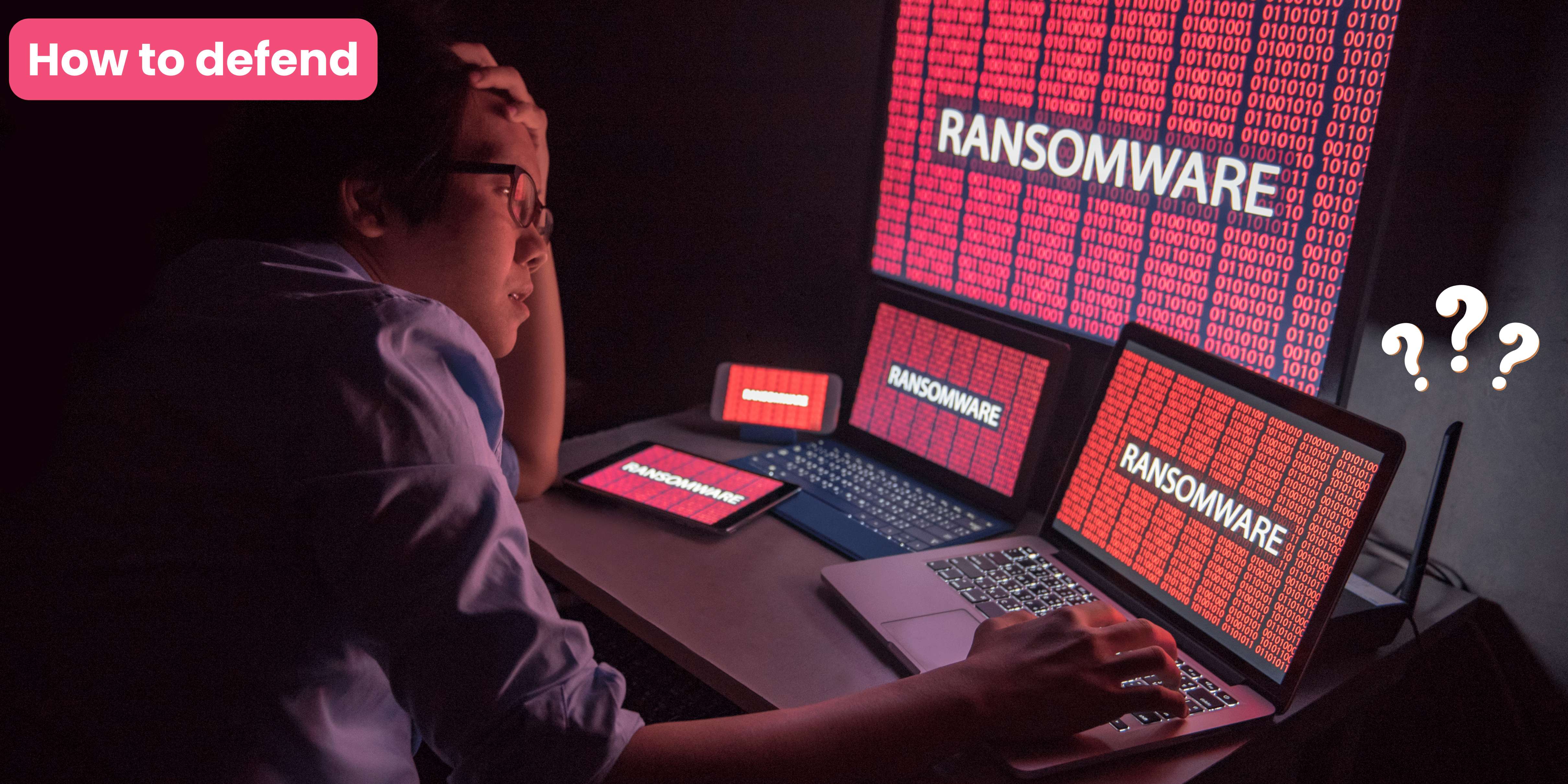What is Ransomware & How to Defend Against Ransomware Attacks?
Cybersecurity
What Is Ransomware?
Ransomware is one of the most serious dangers to corporate security, and it's just getting worse. Ransomware, according to MacAfee Trellix, is malware that uses encryption to hold a victim's data hostage. The private data of an individual or an enterprise is concealed by the attacker, making it ridiculous for them to access files, databases, or apps. Then a ransom is demanded by the attacker to regain access.
Malware is spread via a variety of channels, including websites, social media, instant chats, email attachments, and other means of communication.
With the rise of cryptocurrencies like Bitcoin, ransomware attacks grew in popularity. Other prominent cryptocurrencies that attackers encourage victims to utilize, in addition to Bitcoin, are Ripple, Ethereum, and Litecoin.
Types Of Ransomware:
These days, four forms of ransomware attacks are gaining popularity. They are as follows:
Locker Ransomware: The Locker ransomware prevents users from accessing their computers. Until a ransom is paid, attackers prevent users from using the system. A pop-up window may appear on the victim's screen, demanding a ransom to gain access.
Crypto Ransomware: Crypto ransomware's goal is to encrypt your vital data, such as papers, photos, and videos, but not to disrupt your computer's core functioning. It is more pervasive than locker ransomware. It encrypts all or partial files on a computer and demands a ransom in exchange for the decryption key from the victim.
Double Extortion Ransomware: Rather than encrypting data, Double Extortion ransomware exfiltrates it first. If the attackers' demands are not met, the stolen data will be made public. Paying the ransom, on the other hand, does not guarantee data security because the attackers have access to the stolen information.
Raas Ransomware: For ransomware developers, RaaS is a new model. The ransomware developers, like software as a service (SaaS), sell or lease their ransomware variants to affiliates, who then use them to carry out an assault. Ransomware is no longer confined to the developers who produce it because of RaaS.
Famous Ransomware Attacks:
Let us investigate two famous Ransomware attacks that happened recently.
Kaseya Ransomware Attack: Kaseya, an IT solutions provider, was hit by ransomware on July 2, 2021, putting thousands of consumers of their MSP (managed service provider) clients at risk. Attackers infected victims with the REvil ransomware via an automatic software update. The ransomware subsequently encrypts the system's content on that network, disrupting operations for a variety of businesses.
Wannacry Ransomware Attack: WannaCry is a crypto-ransomware worm that targets Windows computers. It's a type of virus that may travel over networks from one system to another system and then encrypt important files once installed. The cybercriminals then demand ransom payments to recover the files. The Wannacry ransomware caused most of the damage in the weeks after May 12, 2017. Between January and March 2021, the number of Wannacry ransomware attacks grew by 53%.
How To Defend Against A Ransomware Attack?
Steps to take to prevent your organization from Ransomware attacks:
-
Cyber risks such as ransomware, phishing, and social engineering can be taught to users. This aids them in the detection of malicious messages.
-
You must ensure that your OS, firmware, third-party software, and anti-malware apps are all up to date.
-
Data should be backed up regularly, and those backups should be double-checked. The single most efficient approach to recovering from a ransomware attack is to back up essential data.
-
Only a few administrators should have access to sensitive information, and they should use long credentials with multifactor authentication.
-
Create a BCP in case your company or organization is hit by ransomware.
-
Consider purchasing cyber insurance coverage to assist you in covering any losses that may occur because of an attack.
-
To secure the Remote Desktop Protocol, organizations should implement all the necessary configurations.
-
Email filters will aid in the detection of harmful code and the quarantining of dubious emails.
Conclusion:
Some victims pay ransom and obtain a key, while others pay but never receive one. MSPs are aware of the dangers of ransomware and understand the importance of having a strategy in place to respond to an attack if they have a victimized customer. Contact us if you want to learn more about how to protect yourself from ransomware attacks.
